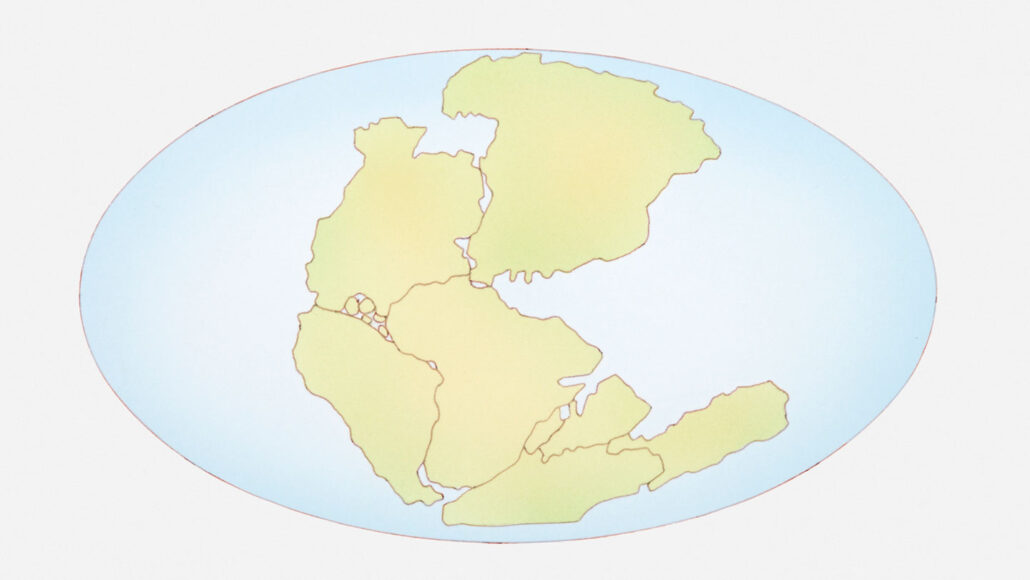continent: (in geology) The huge land masses that sit upon tectonic plates. In modern times, there are six established geologic continents: North America, South America, Eurasia, Africa, Australia and Antarctica. In 2017, scientists also made the case for yet another: Zealandia.
crust: (in geology) Earth's outermost surface, usually made from dense, solid rock (in planetary science) the outermost surface of rocky planets, dwarf planets and natural satellites.
fuse: (v.) To merge two things together, often along some seam.
Gondwana: One of Earth’s two supercontinents that existed during the Devonian Period, which ran from roughly 416 million years ago to 360 million years ago. It’s when some of the earliest plants emerged, initially with no leaves or roots. By the end of this period, ferns and seed plants had evolved. Some shellfish and trilobites shared the oceans with various fishes. And many wingless arthropods (ancestors to spiders and insects) colonized the land.
Pangaea: (or Pangea) A supercontinent that existed from about 300 to 200 million years ago. It was composed of all of the major continents seen today, squished together.
supercontinent: Any of several large landmasses that divided in the ancient geologic past to form today’s continents. Notable examples of supercontinents include notably Pangaea, Gondwana and Laurasia.
tectonic: Surface activity on a large rocky body (such as a planet or moon) as liquid rock flows up to the surface where it solidifies, then slowly drifts atop molten rock, carrying surface features with it.
tectonic plates: The gigantic slabs — some spanning thousands of kilometers (or miles) across — that make up Earth’s outer layer.








